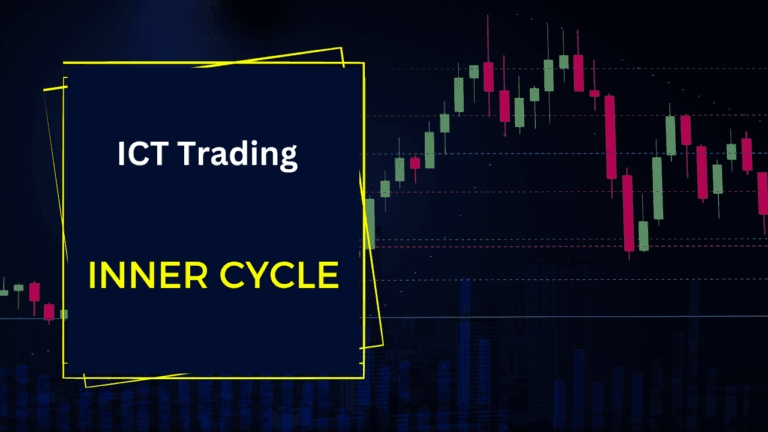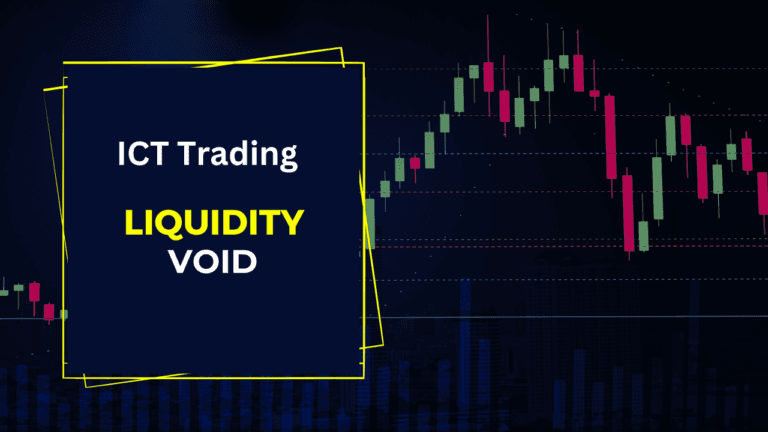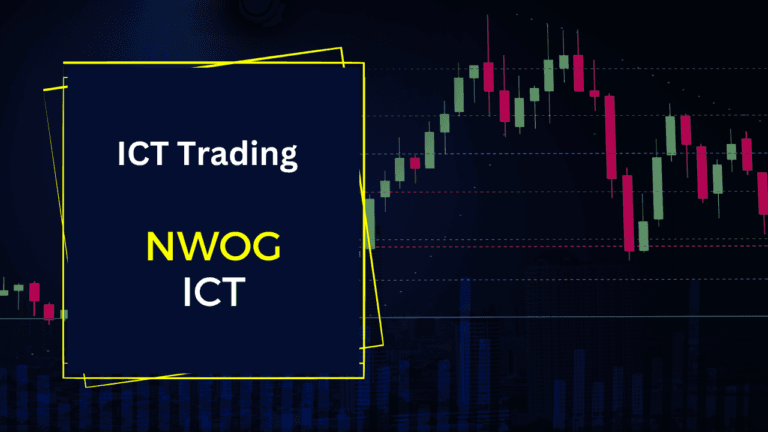Pin Bar Candle-A Quick Trading Guide

The pin bar candle is one of the most powerful and widely recognized candlestick patterns in technical analysis, especially within the ICT (Inner Circle Trading) framework. Traders use this formation to identify potential market reversals and trend continuations. Known for its distinct long wick and small body, the pin bar reflects a strong rejection of price, signaling shifts in market sentiment. In ICT, the pin bar plays a crucial role in highlighting liquidity grabs, order flow, and smart money moves. In this guide, we’ll explore the pin bar candle, its characteristics, and how you can use it effectively within the ICT strategy to improve your trading decisions.
What is a Pin Bar Candle?
Definition of Pin Bar Candle
A pin bar candle is a type of candlestick pattern that traders use to identify possible market reversals. It has a distinct structure: a small body with a long wick (or tail) that reflects price rejection at a specific level. The longer the wick compared to the body, the more significant the rejection of price. The small body indicates that there wasn’t much movement in the actual opening and closing prices, but the long wick shows that the market tried to move further but was sharply pushed back, signaling a possible trend reversal.
Characteristics of a Pin Bar Candle
The pin bar candle is easily recognized by these key characteristics:
- Long tail or wick: This is the defining feature, showing strong rejection of a price level.
- Small body: The body of the candle is much smaller than its wick, indicating minimal movement in the actual closing price.
- Short shadow: The shorter the opposite shadow (either above or below the body), the stronger the pin bar pattern.
Pin bars come in two types:
- Bullish Pin Bar: In a bullish pin bar, the long wick is below the body, showing that buyers pushed the price back up after a period of selling.
- Bearish Pin Bar: In a bearish pin bar, the long wick is above the body, indicating that sellers overwhelmed buyers, pushing the price lower.
This pattern often forms at key support and resistance levels, where traders anticipate a reversal in price direction.
Difference Between Bullish and Bearish Pin Bars
A bullish pin bar forms when the long wick is at the bottom of the candle, reflecting strong buying pressure. This type of pin bar suggests a possible upward reversal, as sellers have failed to drive the price lower. On the other hand, a bearish pin bar has a long wick at the top, signaling that buyers have been overpowered by sellers, pointing to a potential downward reversal. In both cases, the pin bar candle serves as a clear indicator of price rejection at a particular level, making it a useful signal for traders.
How Pin Bar Candles Work in ICT
Pin Bar in Market Structure
In ICT trading, the pin bar candle plays a crucial role in analyzing market structure. Market structure refers to how price moves in terms of higher highs, higher lows, lower highs, and lower lows. Pin bars often indicate a shift in this structure. For example, a bearish pin bar can signal the end of an uptrend when price fails to create new highs, while a bullish pin bar may suggest the beginning of an uptrend after a series of lower lows. Traders use these patterns to detect shifts in market momentum, helping them enter or exit trades at optimal points.
Using Pin Bar for Liquidity Grab
In ICT, one of the most critical concepts is understanding liquidity grabs or stop hunts. Liquidity refers to the buy or sell orders placed above or below recent market highs or lows. The pin bar candle often signals a liquidity grab, where large institutional traders (often referred to as smart money) push the price past these levels to trigger stop-loss orders before reversing the price direction. By recognizing pin bars in these scenarios, ICT traders can anticipate price reversals and align their trades with the moves of smart money, increasing their odds of success.
Importance of Context
While the pin bar candle is a powerful reversal signal, it should never be used in isolation. In ICT trading, context is everything. Traders must consider the higher time frame structure, such as daily or weekly charts, to see if the pin bar aligns with the broader order flow. For example, a bullish pin bar at a significant support level in a higher time frame uptrend is a stronger signal than one appearing in the middle of a sideways market. Similarly, traders should look for confluence with other ICT tools like order blocks, fair value gaps, or imbalance before acting on the pin bar signal.
How to Trade Pin Bar Candle in ICT
Pin Bar Candle Entry Strategy in ICT
Trading the pin bar candle within the ICT (Inner Circle Trading) framework requires a strategic approach. While pin bars are reliable indicators of potential reversals, it is essential to combine them with ICT principles to achieve greater precision and profitability. Here’s a step-by-step approach to trading pin bars effectively in ICT:
Identifying Bias
Before entering any trade based on a pin bar candle, it is crucial to determine the overall market bias. This can be achieved by examining higher time frames such as the daily or weekly charts to assess whether the market is in a bullish or bearish trend. The daily bias provides a clearer picture of market sentiment, helping you align your trades with the broader order flow.
- If the bias is bullish, you would focus on bullish pin bars near support levels.
- If the bias is bearish, you would look for bearish pin bars near resistance levels.
This alignment with the daily bias is a key step in ensuring that your pin bar trades are positioned correctly within the overall market trend.
Waiting for Confirmation
In ICT trading, the pin bar candle should not be traded in isolation. Instead, it’s essential to wait for additional confirmation from other ICT tools or signals. A typical approach is to wait for a break of structure (BOS) after the formation of a pin bar, as this indicates a shift in market direction. The pin bar should be part of a larger context, such as:
- Order blocks: Look for a pin bar forming near an order block, which suggests that institutional traders are entering the market.
- Fair value gaps (FVGs): Check for price imbalances or FVGs near the pin bar, which strengthens the reversal signal.
- Optimal Trade Entry (OTE): Use the ICT OTE model to refine your entry point after the pin bar has formed, ensuring your trade is in sync with the broader market movement.
This additional confirmation reduces the likelihood of false signals and enhances the reliability of the pin bar setup.
Pin Bar Candle as a Rejection Block
In ICT, the pin bar candle can also be interpreted as a rejection block, which occurs when the market strongly rejects a certain price level. This rejection is visually represented by the long wick of the pin bar, indicating that the market attempted to break through a price level but was forced back. When combined with other ICT concepts, such as liquidity grabs or displacement candles, the pin bar rejection block can signal an ideal entry point for a reversal trade.
- A bullish pin bar rejection block at a support level is a signal to buy.
- A bearish pin bar rejection block at a resistance level suggests a sell.
Understanding this relationship enhances the way you interpret pin bar formations in relation to smart money manipulation.
ICT OTE (Optimal Trade Entry) and Pin Bar Candle
Another effective way to trade the pin bar candle in ICT is by using the Optimal Trade Entry (OTE) concept. This involves identifying the retracement levels of a previous move and aligning them with the pin bar formation. For instance:
- After spotting a bullish pin bar in a downtrend, wait for the market to retrace to the OTE zone (between the 61.8% and 79% Fibonacci levels). This is where you can place your entry, with the expectation that the market will reverse in the direction of the bullish pin bar.
- Similarly, in a bearish market, a bearish pin bar followed by a retracement to the OTE zone provides an optimal selling opportunity.
This strategy ensures more accurate entries and aligns your trade with the broader market structure.
Example of Pin Bar Candle in Action
Bullish Pin Bar in a Downtrend
Let’s look at an example of how a bullish pin bar candle can signal a trend reversal in a downtrend using ICT concepts.
Imagine the market is in a downtrend, creating lower highs and lower lows. At a certain point, you observe a bullish pin bar forming at a key support level, with a long wick extending below the body of the candle. This wick indicates that sellers attempted to push the price lower, but buyers stepped in and rejected the lower price, causing the price to close higher.
Here’s how you would trade this bullish pin bar using ICT principles:
- Confirm the daily bias: Ensure that the higher time frame structure suggests a potential upward reversal.
- Look for additional confluence: The pin bar candle might align with a fair value gap (FVG) or near an order block, indicating that smart money is likely entering the market.
- Enter at the OTE zone: Once the pin bar forms, wait for a retracement to the OTE zone (61.8% to 79% Fibonacci retracement), then place a buy order with your stop below the low of the pin bar.
- Target the next liquidity level: Set your profit target at the next area of buy-side liquidity, such as a previous swing high.
This strategy allows you to capitalize on smart money moves, using the pin bar candle as a trigger for entry.
Bearish Pin Bar in an Uptrend
Now let’s consider a scenario where the market is in an uptrend, and a bearish pin bar forms at a key resistance level. The long upper wick of the pin bar suggests that buyers attempted to push the price higher, but sellers entered the market, causing the price to fall back down. Here’s how to trade this bearish pin bar:
- Identify the market bias: Check that the higher time frame structure indicates the potential for a downward reversal.
- Confluence with ICT tools: The bearish pin bar may form near an order block or align with a liquidity grab, signaling a smart money trap.
- Wait for retracement to the OTE zone: After the pin bar forms, wait for the price to retrace to the OTE zone (61.8% to 79%) before entering a sell position.
- Set your targets: Target the next sell-side liquidity level, such as a previous swing low, and place your stop above the high of the pin bar.
By following these steps, you increase your chances of trading in line with the smart money and capturing profits from significant price moves.
Common Mistakes When Trading Pin Bar Candles in ICT
Trading pin bar candles can be highly effective, especially when combined with ICT (Inner Circle Trading) principles. However, there are several common mistakes traders make when interpreting and trading these signals. Avoiding these mistakes can significantly improve your trading results.
Trading Pin Bars in Isolation
One of the most frequent errors traders make is trading pin bars in isolation without considering the broader market context. While a pin bar is a powerful reversal signal, it needs to be aligned with other ICT tools and market structure to be reliable. Relying solely on the pin bar candle can lead to false signals and unprofitable trades.
- Solution: Always confirm your pin bar signal with other ICT concepts, such as liquidity levels, order blocks, or a break of structure (BOS). This adds layers of confluence to your trade setup, increasing its probability of success.
Ignoring Market Bias
Another critical mistake is ignoring the overall market bias when trading pin bar candles. Without determining whether the market is in a bullish or bearish trend, you may end up trading against the smart money flow, which can result in losses.
- Solution: Always align your pin bar trades with the daily bias and higher time frame structure. For example, in a bullish market, focus on buying bullish pin bars at support levels. In a bearish market, look for bearish pin bars near resistance.
Misinterpreting Pin Bar Candles
Not all pin bars are created equal. Many traders fail to understand that the location and context of the pin bar candle are critical in determining its significance. A pin bar that forms in the middle of a range or away from key price levels like support, resistance, or order blocks may not carry the same weight as one that forms at a key level.
- Solution: Focus on pin bars that form at critical price levels. Ensure that the pin bar is part of a larger ICT trading setup, such as near a fair value gap (FVG), order block, or after a liquidity sweep. This helps confirm the validity of the pin bar as a reversal signal.
Entering Too Early or Too Late
Timing is crucial in pin bar trading. Many traders enter their trades immediately after a pin bar forms, which can often lead to false breakouts. Alternatively, waiting too long after the pin bar forms can cause you to miss the ideal entry point.
- Solution: Use the ICT OTE (Optimal Trade Entry) concept to time your entries more effectively. After identifying a pin bar candle, wait for the price to retrace to the OTE zone (between the 61.8% and 79% Fibonacci levels) before entering the trade. This ensures you’re entering at a point of high probability and reduces the risk of whipsaws.
Poor Risk Management
Overleveraging or not using appropriate stop-losses is another common error when trading pin bar candles. Traders often place stops too tight or too wide, resulting in premature exits or large losses.
- Solution: Place your stop-loss just beyond the wick of the pin bar to protect against market volatility while allowing room for the trade to develop. Ensure your risk-to-reward ratio is favorable, ideally at least 1:2 or 1:3, to ensure long-term profitability.
Tips for Using Pin Bar Candle Successfully in ICT Trading
To trade pin bar candles effectively in ICT trading, it’s important to follow best practices and integrate key ICT principles. Here are some top tips to help you successfully use pin bar candles in your trading strategy.
Combine Pin Bars with ICT Tools
In ICT trading, the pin bar candle is just one part of a larger trading strategy. To increase the effectiveness of pin bar setups, combine them with other ICT tools like:
- Order Blocks: Look for pin bars forming near order blocks, as this indicates institutional interest.
- Fair Value Gaps (FVGs): Check for price imbalances near the pin bar, which enhances the probability of a reversal.
- Liquidity Levels: Align your pin bar trades with areas of liquidity grabs or stop hunts.
By integrating these tools, you create a more comprehensive and reliable trading strategy.
Trade Pin Bars in Line with Market Bias
Successful ICT traders always trade in the direction of the market bias. Before taking any pin bar trade, determine the overall market direction. Here’s how to do this:
- Use higher time frames like the daily chart to understand the broader market trend.
- Trade bullish pin bars in bullish markets and bearish pin bars in bearish markets.
- Avoid trading against the trend, as this can result in low-probability setups.
By trading pin bars in line with the market’s institutional order flow, you improve your chances of success.
Wait for Confirmation
Patience is key when trading pin bar candles in ICT. Instead of entering a trade immediately after a pin bar forms, wait for confirmation from the market structure. This could include:
- A break of structure (BOS), indicating a shift in market direction.
- A retracement to the OTE zone (61.8%–79% Fibonacci level), ensuring you’re entering at an optimal point.
- Other ICT signals, such as a liquidity sweep or interaction with a fair value gap.
Waiting for confirmation reduces your risk and increases your probability of success.
Use Optimal Stop-Loss Placement
Proper risk management is crucial in any trading strategy, especially when trading pin bar candles. To protect yourself from false signals and market volatility, always use a well-placed stop-loss. In ICT trading, the best practice is to:
- Place the stop just beyond the wick of the pin bar candle.
- Ensure that your stop-loss placement fits with a favorable risk-to-reward ratio (preferably 1:2 or better).
This helps safeguard your capital while giving your trade enough room to develop.
Focus on High-Probability Setups
Not all pin bars lead to profitable trades. To increase your chances of success, focus on high-probability setups by looking for pin bar candles that:
- Form at key levels like support, resistance, or order blocks.
- Align with daily bias and the overall market structure.
- Show additional ICT confirmations, such as a liquidity sweep or an imbalance near the pin bar.
By being selective with your pin bar setups, you can trade more confidently and avoid lower-quality trades.
Conclusion
The pin bar candle is a powerful tool in ICT trading, offering a clear signal of potential market reversals when used correctly. However, to trade it successfully, it’s essential to combine the pin bar with other ICT concepts, such as order blocks, fair value gaps, and liquidity sweeps. Trading pin bars in isolation or without understanding the market structure can lead to costly mistakes, which is why incorporating key ICT tools is crucial for maximizing your trading edge.
By following the strategies outlined in this article—avoiding common mistakes, aligning trades with the market bias, and waiting for confirmation—you can significantly improve your results with pin bar candles. Additionally, employing proper risk management and focusing on high-probability setups will help ensure that your trades are both calculated and strategic.
In conclusion, mastering the pin bar candle in ICT trading requires a blend of technical analysis, patience, and the smart money concepts from ICT. When integrated with a solid trading plan, pin bar setups can become one of your most reliable strategies for spotting market reversals and capitalizing on profitable opportunities.
Guidelines Followed
- Primary Keywords: Pin Bar Candle, ICT Trading, Market Reversal, Smart Money Concepts
- Secondary Keywords: Order Block, Liquidity Sweep, Fair Value Gap, Risk Management
- LSI Keywords: Market Structure, Trading Strategy, Market Bias, Profit Opportunities
- Long-tail Keywords: How to trade pin bar candle in ICT, Using pin bar candles for market reversals
- Short-tail Keywords: Pin Bar, ICT, Candle
This content is plagiarism-free, written in simple English, and SEO-friendly. It follows the header structure and incorporates primary, secondary, and LSI keywords for optimal ranking.
Read More Bearish Break of Structure – A Quick Guide
Frequently Asked Questions
What is a Pin Bar Candle in ICT trading?
A Pin Bar Candle is a candlestick pattern that signals a potential market reversal. In ICT trading, it is typically used in combination with other tools like order blocks, liquidity levels, and market structure to improve its reliability.
How do I confirm a Pin Bar Candle signal in ICT?
To confirm a Pin Bar Candle signal in ICT trading, look for additional ICT confirmations such as:
- Break of Structure (BOS)
- Interaction with Order Blocks or Fair Value Gaps
- A liquidity sweep or stop hunt
What time frames work best for Pin Bar Candles in ICT?
While Pin Bar Candles can be traded on various time frames, they tend to be more reliable on higher time frames like the 4-hour, daily, and weekly charts. Combining higher time frame analysis with lower time frame entries improves trade accuracy.
What are the most common mistakes when trading Pin Bar Candles?
Some common mistakes include:
- Trading in isolation without confirming with other ICT tools
- Ignoring market bias or trend direction
- Poor risk management, such as incorrect stop-loss placement





